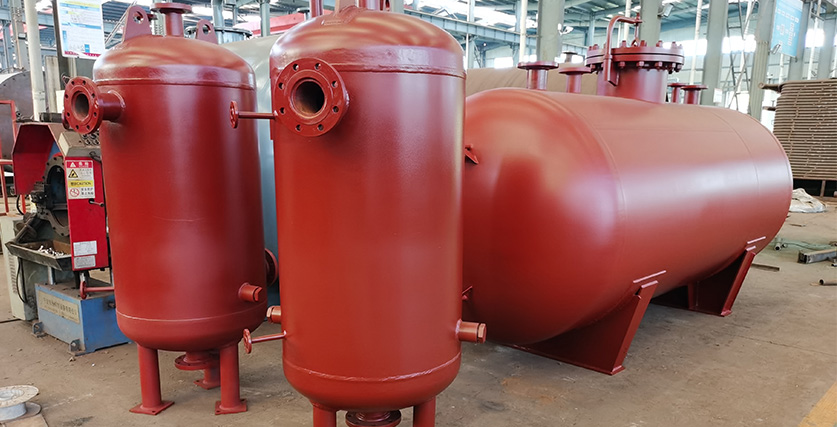
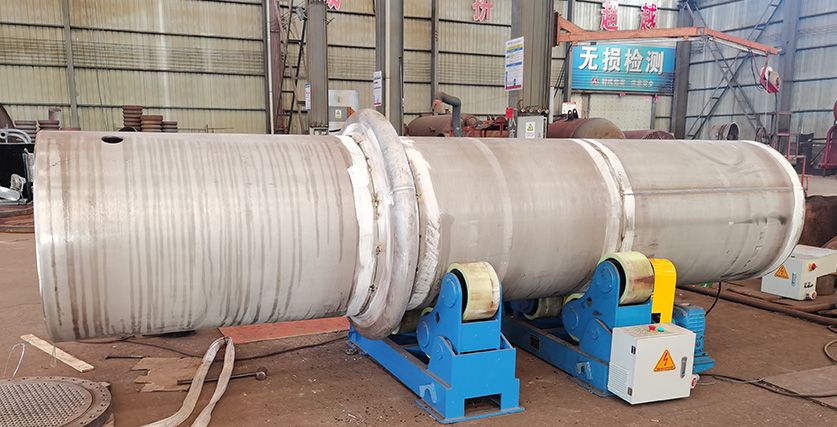
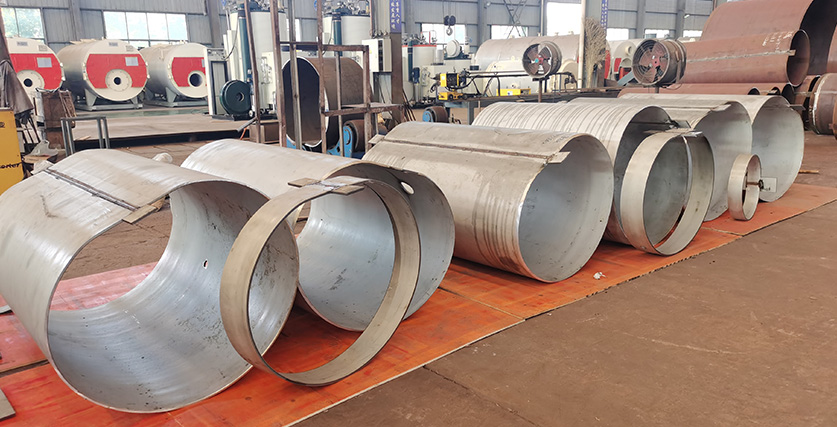



Heat exchangers are commonly used process equipment in many industrial production departments, especially in petroleum and chemical production. In chemical plants, heat exchangers can be used as heaters, coolers, condensers, evaporators, and reboilers. With the continuous development of China's industry, the requirements for energy utilization, development, and conservation are constantly increasing, thus the requirements for heat exchangers are also increasingly strengthened.
Shell and tube heat exchangers are commonly used forms of heat exchangers and have been widely used in petroleum and chemical production. Due to its compact, lightweight, and high heat transfer efficiency,there is an increasing interest in shell and tube heat exchangers.
There are generally two types of relative flow directions in heat exchangers: forward flow and reverse flow. When flowing downstream, the temperature difference between the two fluids at the inlet is maximum and gradually decreases along the heat transfer surface. When in reverse flow, the temperature difference distribution between the two fluids along the heat transfer surface is relatively uniform. When the inlet and outlet temperatures of both cold and hot fluids are constant, and there is no phase transition between the two fluids, the heat transfer area of the heat exchanger decreases with the increase of counter current flow; If the heat transfer area remains unchanged, using counter current can reduce the consumption of heating or cooling fluids. The former can save equipment costs, while the latter can save operating costs, so counter current heat exchange is adopted in the design.
After the Acid/alkali filtrate enters the front pipe box, it passes through all the pipes in one go and reaches the rear pipe box, and is discharged from the rear pipe box, which is called the pipe pass. The place where saturated steam flows is called the shell side. The saturated steam enters the shell side from the steam inlet at the rear of the shell side, passes through the internal tube rows of the shell side, and is discharged from the exhaust port at the front of the shell side. At the same time, the condensate is discharged, and the steam is relatively clean, so the shell side does not need to be cleaned.
Two types of media flow counter current in the channel. Saturated steam transfers heat energy to the heat exchange tube, which in turn transfers heat energy to the cold medium inside the tube, achieving the goal of cooling when the temperature of saturated steam decreases and heating when the temperature of the cold medium increases.
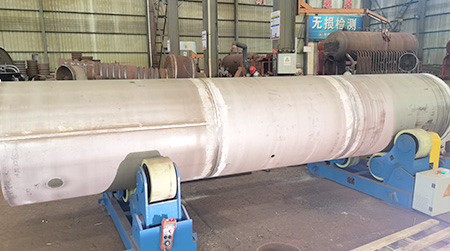

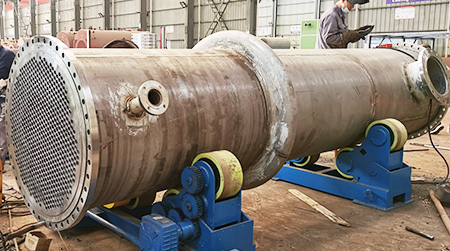
The tube and tube heat exchanger mainly consists of a tube bundle, a shell, a baffle plate (baffle), a head, and a tube plate. The shell is mostly cylindrical, with a tube bundle inside. The two ends of the tube bundle are fixed on the tube plate by welding or expanding. During operation, the cold fluid flows inside the tube bundle, which is called the tube pass; The flow of hot fluid inside the shell is called shell side. Once the corrosion and leakage of the tube plate occur, it will cause the occurrence of medium flow, seriously affecting product quality and the smooth operation of the equipment. If the medium is a special medium, it can cause safety accidents in severe cases.
The shell side mainly consists of shell side tube plates, shell side shells, tube bundles, baffle plates, etc.
The tube side mainly consists of two end heads (tube boxes), shell side tube plates, tube bundles, etc.
Tube side function and advantages: Corrosive fluid is inside the tube, avoiding simultaneous corrosion of the shell and tube, making it easy to clean. There are fewer opportunities for leaks. To prevent corrosion, all materials are made of stainless steel.
Shell side function and advantages: The shell and tube bundle, as well as the tube plates at both ends, form a closed space, and saturated steam flows between the shell side tubes, facilitating the timely removal of condensate. And the steam is relatively clean, and the shell side does not need to be cleaned.
|
Design data |
Shell Side |
Tube Side |
|
MEDIUM |
Saturated steam |
Acid filtrate |
|
MEDIUM NATURE |
NOT LETHAL |
NOT LETHAL |
|
DESIGN PRESSURE |
0.6 MPa |
0.6 MPa |
|
OPERATING PRESSURE |
0.35 MPa |
0.32 MPa |
|
DESIGN TEMPERATURE |
100℃ |
180℃ |
|
INLET TEMP. |
147℃ |
70℃ |
|
OUTLET TEMP. |
|
75℃ |
|
Volume of flow |
~23t/h |
~2300m3/h |
|
Max pressure drop |
~0.05 MPa |
~0.05 MPa |
|
MATERIAL |
304 |
2205 |
|
CORROSION ALLOWANCE |
1 |
1 |
|
Specification |
OD.1016mm |
Φ25x1.5x4640mm |
|
Hydraulic test pressure |
0.825 MPa |
0.783 MPa |
|
Hydraulic TEST TEMP. |
7~40°C |
7~40°C |
|
Heat Exchange Area |
260.6m2 |
|
For the fluid between the tube shells, in order to improve the heat transfer coefficient of the outer surface of the tube, several baffle plates are installed outside the tube. There are two commonly used forms of baffles, bow shaped and circular shaped, and we use bow shaped.
The function and advantages of a baffle: ① increasing the flow rate of fluid in the shell side; ② Strengthen turbulence intensity; ③ Improve heat transfer efficiency; ④ Support the heat exchange tube.